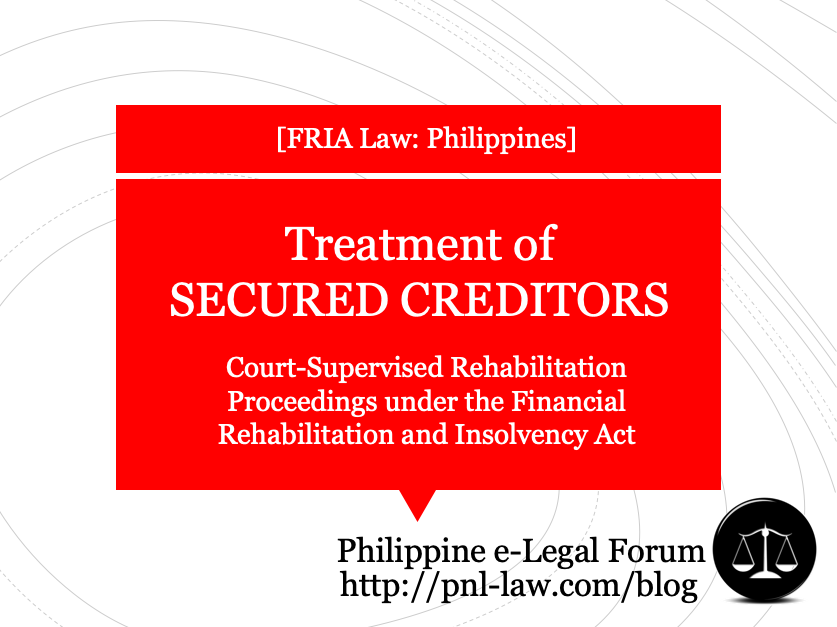Secured creditor refers to a creditor with a secured claim, which is a claim that is secured by a lien. A lien is a statutory or contractual claim or judicial charge on real or personal property that legally entitles a creditor to resort to said property for payment of the claim or debt secured by such lien.

[Considering that this refers to court-supervised rehabilitation proceedings, see: Court-Supervised Rehabilitation Proceedings under the Financial Rehabilitation and Insolvency Act (FRIA) of 2010.]
NO DIMINUTION OF RIGHTS
The issuance of the Commencement Order and the Suspension or Stay Order, and any other provision of Republic Act No. 10142, shall not be deemed in any way to diminish or impair the security or lien of a secured creditor, or the value of his lien or security, except that his right to enforce said security or lien may be suspended during the term of the Stay Order.
The court, upon motion or recommendation of the rehabilitation receiver, may allow a secured creditor to enforce his security or lien, or foreclose upon property of the debtor securing his/its claim, if the said property is not necessary for the rehabilitation of the debtor. The secured creditor and/or the other lien holders shall be admitted to the rehabilitation proceedings only for the balance, if any, of his claim.
LACK OF ADEQUATE PROTECTION
The court, on motion or motu proprio, may terminate, modify or set conditions for the continuance of suspension of payment, or relieve a claim from the coverage thereof, upon showing that:
- (a) a creditor does not have adequate protection over property securing its claim; or
- (b) the value of a claim secured by a lien on property which is not necessary for rehabilitation of the debtor exceeds the fair market value of the said property.
A creditor shall be deemed to lack adequate protection if it can be shown that:
- (a) the debtor fails or refuses to honor a pre-existing agreement with the creditor to keep the property insured;
- (b) the debtor fails or refuses to take commercially reasonable steps to maintain the property; or
- (c) the property has depreciated to an extent that the creditor is under secured.
Upon showing of a lack of protection, the court shall order the debtor or the rehabilitation receiver to make arrangements to provide for the insurance or maintenance of the property, or to make payments or otherwise provide additional or replacement security such that the obligation is fully secured. If such arrangements are not feasible, the court may modify the Stay Order to allow the secured creditor lacking adequate protection to enforce its security claim against the debtor. The court, however, may deny the creditor the remedies in this paragraph if the property subject of the enforcement is required for the rehabilitation of the debtor.
If a motion is filed, it must be served on the debtor and the rehabilitation receiver in a manner that will ensure its receipt at least 3 days before the hearing, unless the court, for good reason shown, sets the hearing on shorter notice. If a creditors’ committee has been formed, the motion shall also be served on the creditors’ committee.
